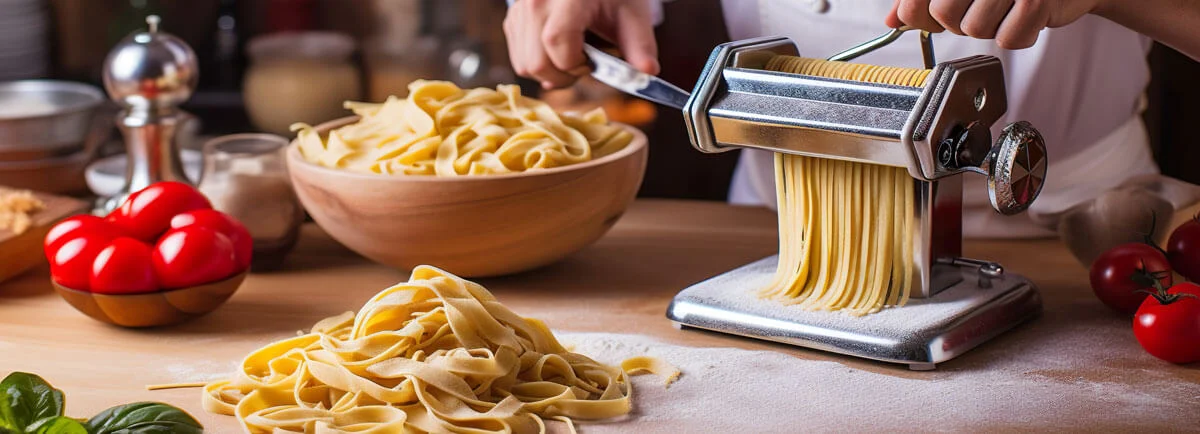A comprehensive guide to purchasing the best pasta maker, with many useful tips on the various models and their main functions and features.
Pasta Maker Purchasing Guide,
Compiled and Edited by Real Cooking and Food Processing Experts
Making homemade pasta is a widespread passion, especially in Italy, hence why it is becoming increasingly common to find modern and sophisticated models of pasta makers even in private kitchens.
Along with their constant spread, the variety of models and functionalities is also constantly increasing.
Therefore, it is getting more and more complicated to answer the question: “Which one is the best pasta maker?”
In this Pasta Maker Purchasing Guide, we will examine various models on the market and their main features.
CONTENTS
1. Introduction
Over the years, the progress and improvement of pasta makers has allowed us to prepare pasta sheets with increasingly easier and faster procedures and to cut pasta into a variety of shapes.
Making fresh pasta at home is a well-established habit of the Italian tradition, which not only allows you to control the quality of the ingredients, but also saves money, especially if you are used to buying fresh pasta in large quantities often.
1.1 How to choose a fresh pasta maker?
- Choosing between Dough Sheeters and Pasta Presses;
- Knowing the pasta shapes you want: Not all machines can produce the same shapes, and the dies, illustrated later in the guide, vary for each model;
- Materials: Depending on the level of the machine, we can find hard plastic fresh pasta makers as well as stainless steel or aluminium models;
- Sizes: It is important to choose a machine for making fresh pasta at home and find one that fits the size of your kitchen and allows you to work comfortably.
The first major distinction is to divide the pasta makers into two large groups:
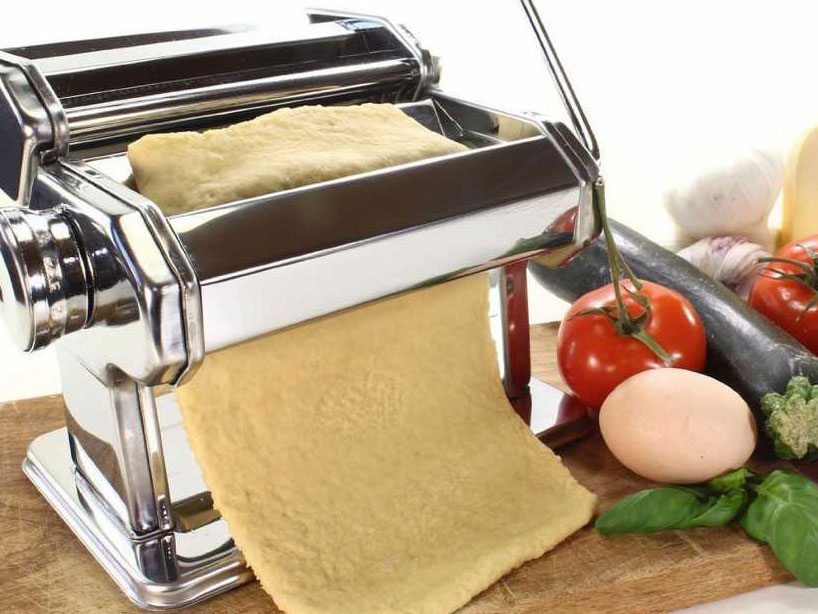
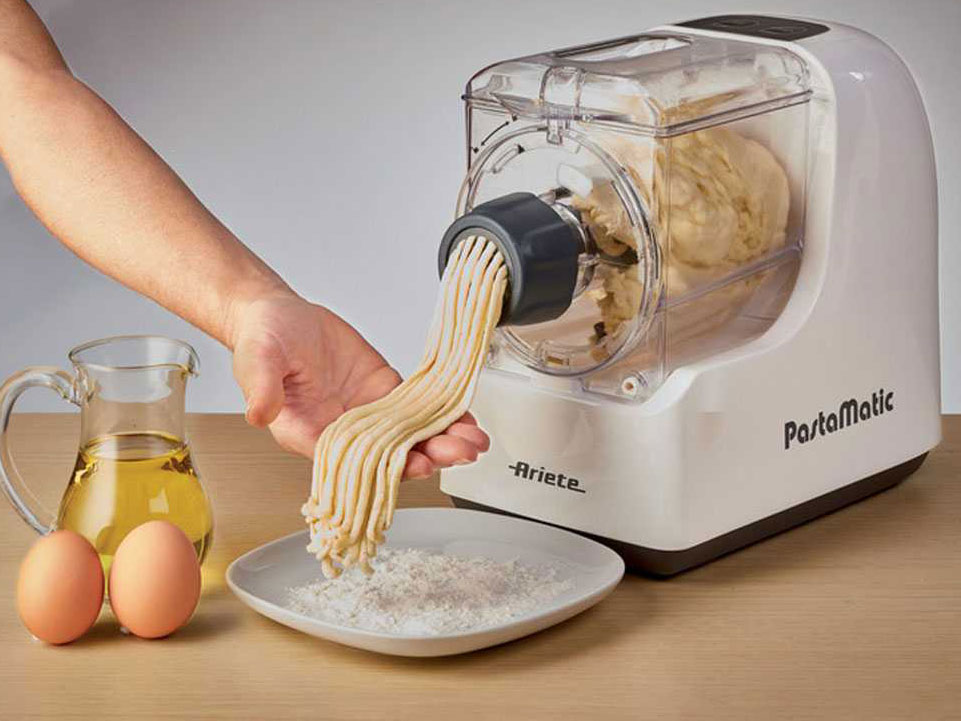
Pasta makers or ‘Sheeters’ are used to roll out the pasta sheet and dough.
They are often equipped with two rollers for rolling out the pasta sheet and then making the desired pasta format or lasagne sheet.
What is a sheeter?
Sheeters are machines that allow you to process the sheet of pasta to the desired thickness.
Pasta presses and extruders, on the other hand, are more articulated machines that perform 2 functions in 1, namely: Kneading and Extruding.
How do pasta presses work?
These specific machines combine two different functions in a single operation.
They knead and subsequently ‘extrude the dough’, i.e. turning dough into fresh pasta through dies of various shapes and sizes.
It must be noted that this feature is possible on medium to high-end machines, which are therefore used in a working and production environment
Later on in the guide, we will discuss the function of the dies and the various types available.
2. Pasta makers and Sheeters
Let us look more specifically at the functions and characteristics of pasta makers or dough sheeters.
As mentioned in the introduction, they are used to roll out the dough to the optimal thickness, but also to roll out lasagne sheets.
They are equipped with metal rollers driven, depending on the model, by a crank or an electric motor.
With these rollers, it is possible to roll out the sheet and then cut it into the desired shape using special pasta-cutting accessories.
How, however, do you choose between the two possible versions?
- Manual Pasta Maker;
- Electric Pasta Maker.
Manual models are the most classic and affordable, they are usually preferred for simpler processes, for rolling out dough without the use of rolling pins or other hand tools in a domestic context.
Electric models, on the other hand, are usually preferred by those who need to roll out dough more quickly and automatically.
They are mainly intended for professional use, such as restaurants or small workshops, and are designed to withstand heavy workloads thanks to electric motors that can develop a power of up to 160 Watts.
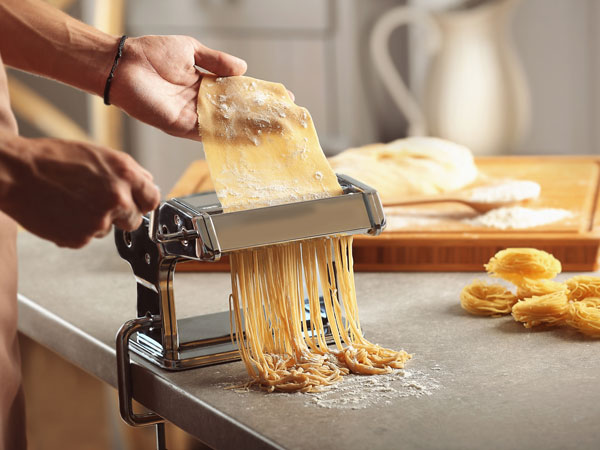
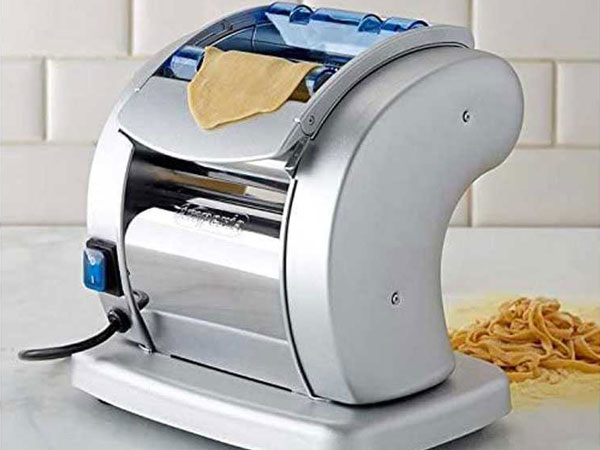
What can be done with the sheeter?
With the sheeter, you can process all kinds of dough, pizza dough, sugar paste and, of course, fresh pasta.
Let us now recap the main features of the various models of pasta makers in a chart.
| Drive | Level of use | Price | |
| Manual Pasta Makers | Manual | Hobbyist | Low |
| Electric Pasta Makers | Electric | Semi-professional / Professional | Medium-High |
3. Pasta Presses
Pasta presses have a different purpose than pasta makers, as they do not roll out the dough sheet but ‘extrude it ‘.
These kitchen utensils can also be further divided into:
- Manual pasta presses;
- Electric;
- Electric with dough mixer.
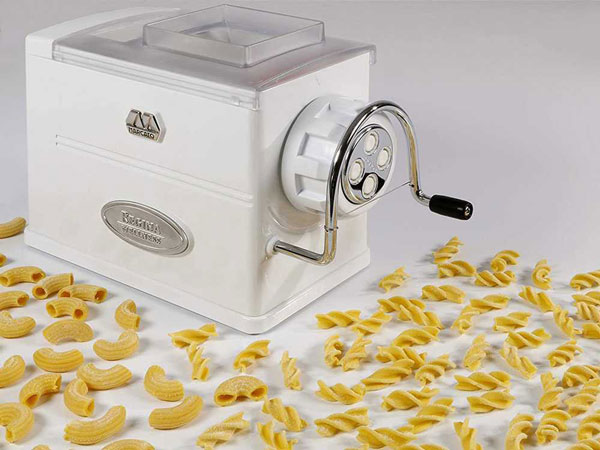
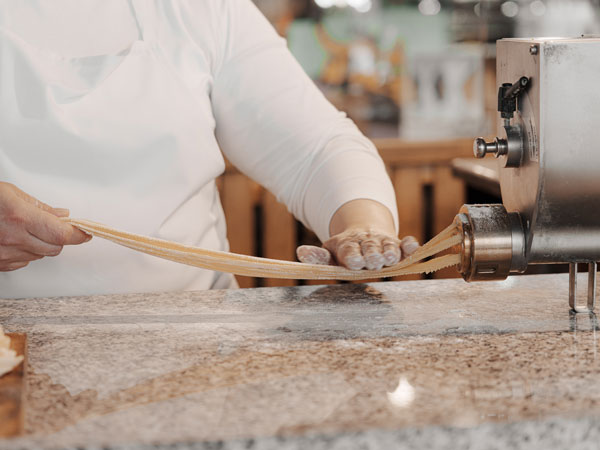
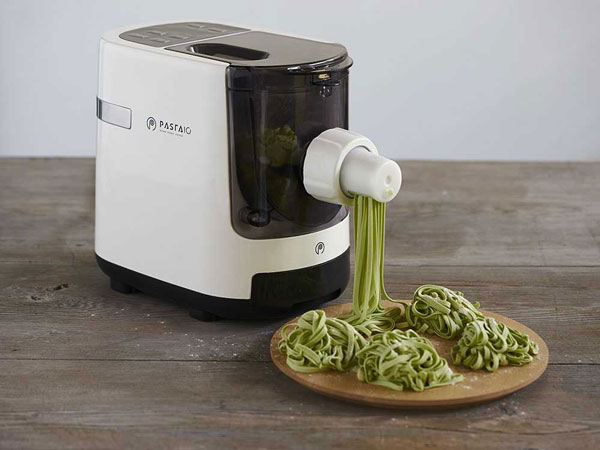
3.1 Manual Presses
The manual pasta press is the most classic version of the three, ideal for extruding pasta in a private, household setting.
Presses are also equipped with electric motors, which can reach considerable power ratings and which allow fresh pasta to be extruded at a rate of up to 9 kg per hour in the most powerful versions.
Their main area of use is therefore the professional one, however, models with lower powers are now also widespread, to satisfy even the most demanding private individual.
3.2 Torchi Elettrici
I torchi elettrici invece, continuando il confronto con le macchine per la pasta, sono paragonabili ai modelli elettrici.
Anche i torchi infatti, dispongono di motori elettrici, che possono arrivare a potenze importanti e che permettono un’estrusione della pasta fresca che può arrivare ad un ritmo di 9Kg l’ora nelle versioni più potenti.
Il loro ambito di utilizzo principale quindi è quello professionale, sono tuttavia ormai diffusi anche modelli con potenze più contenute, per soddisfare anche il privato più esigente.
3.3 Presses with included mixer
Lastly, the most complete and professional versions of pasta presses, i.e. the presses with included mixer.
Setting this version apart is an additional function that is very useful and appreciated in larger and more substantial production areas, namely the kneading feature.
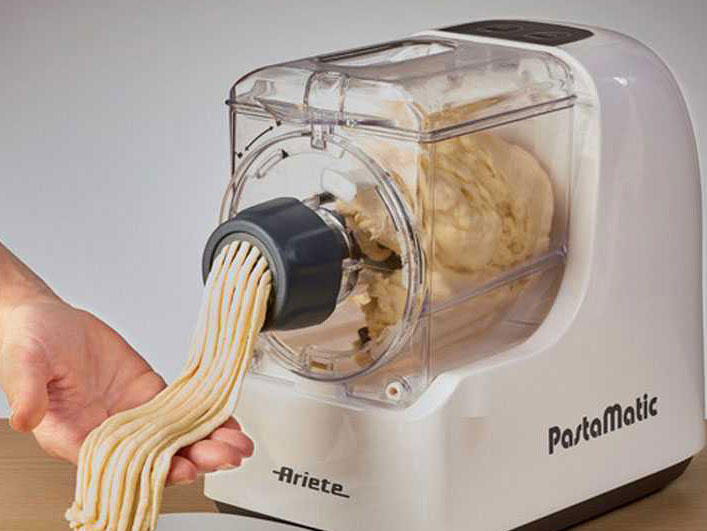
With these models, therefore, all you have to do is add the various ingredients into the mixing bowl, where they will then be kneaded in total autonomy, the only thing to be done being to add the necessary ingredients for the correct preparation of the dough.
Once the dough is ready, upon pressing the appropriate switch, the machine will start to push the dough through the dies, in order to achieve the desired pasta shape.
Below is a summary table of the main features of the various models of pasta presses.
| Drive | Level of use | Price | |
| Manual pasta presses | Manual | Hobbyist | Low |
| Electric pasta presses | Electric Single-phase 230V | Professional | Medium-High |
| Electric presses with dough mixer | Electric Single-phase – Three-phase | Professional – Industrial | High |
4. The dies
Let us now take a look at the various dies that can be fitted on a pasta maker, the various materials and the different shapes available.
These dies are found in pasta extruder presses, and are used precisely to obtain the desired shape.
The most common dies are those made of ABS, Steel and Bronze.
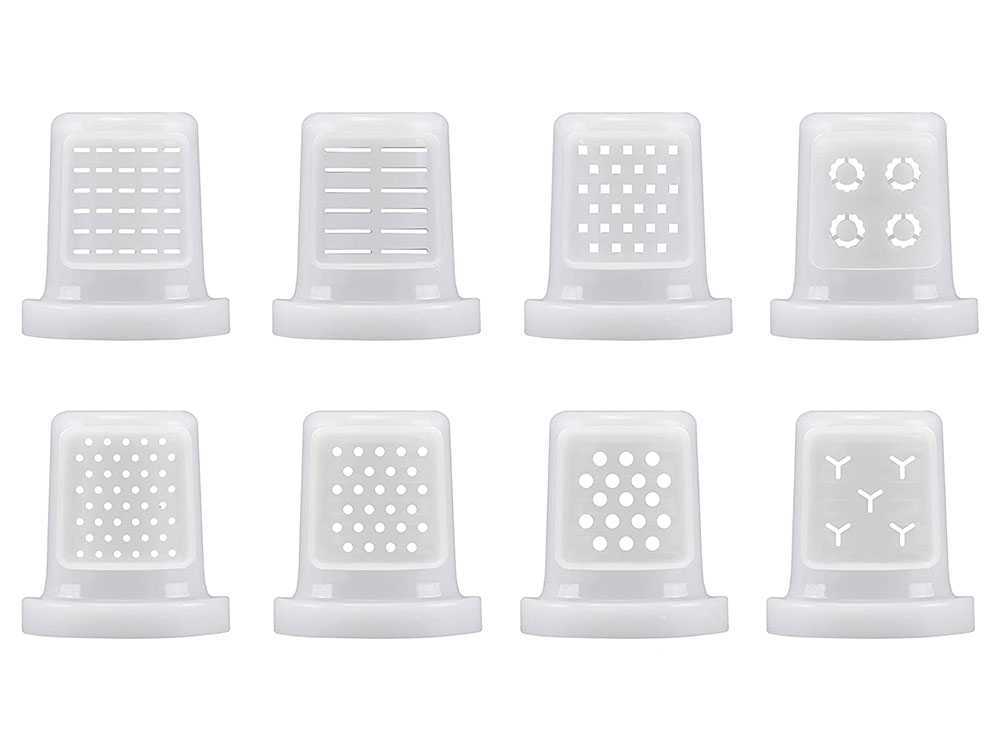
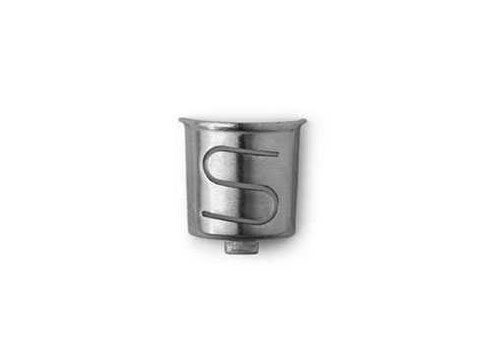
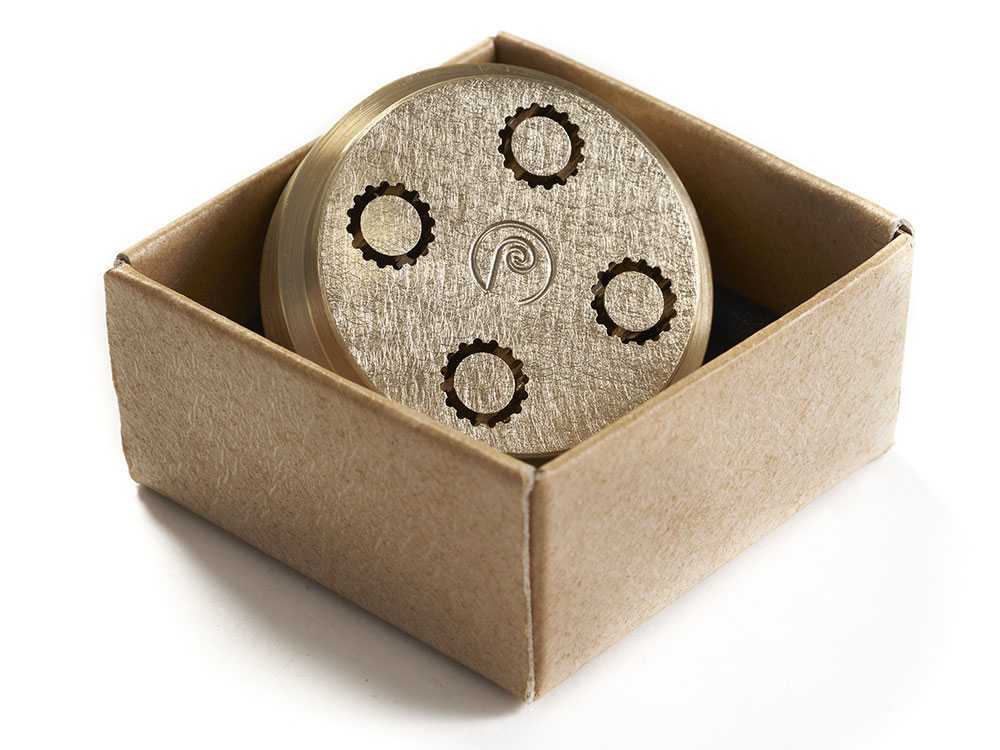
The dies come in many shapes, and based on these shapes, a specific pasta format is created, such as:
- Bucatini;
- Capelli d’angelo;
- Linguine;
- Maccheroni;
- Pasta sheet;
- Spaghetti e molto altro…
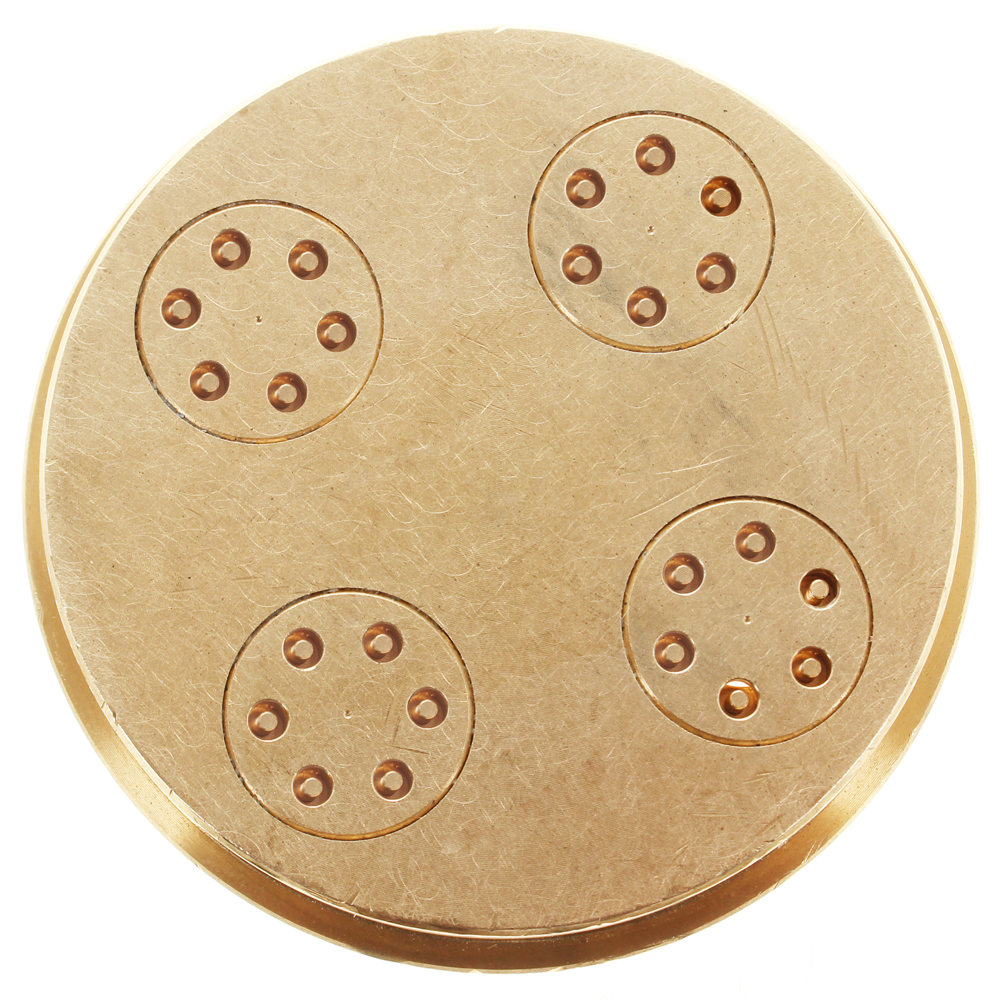
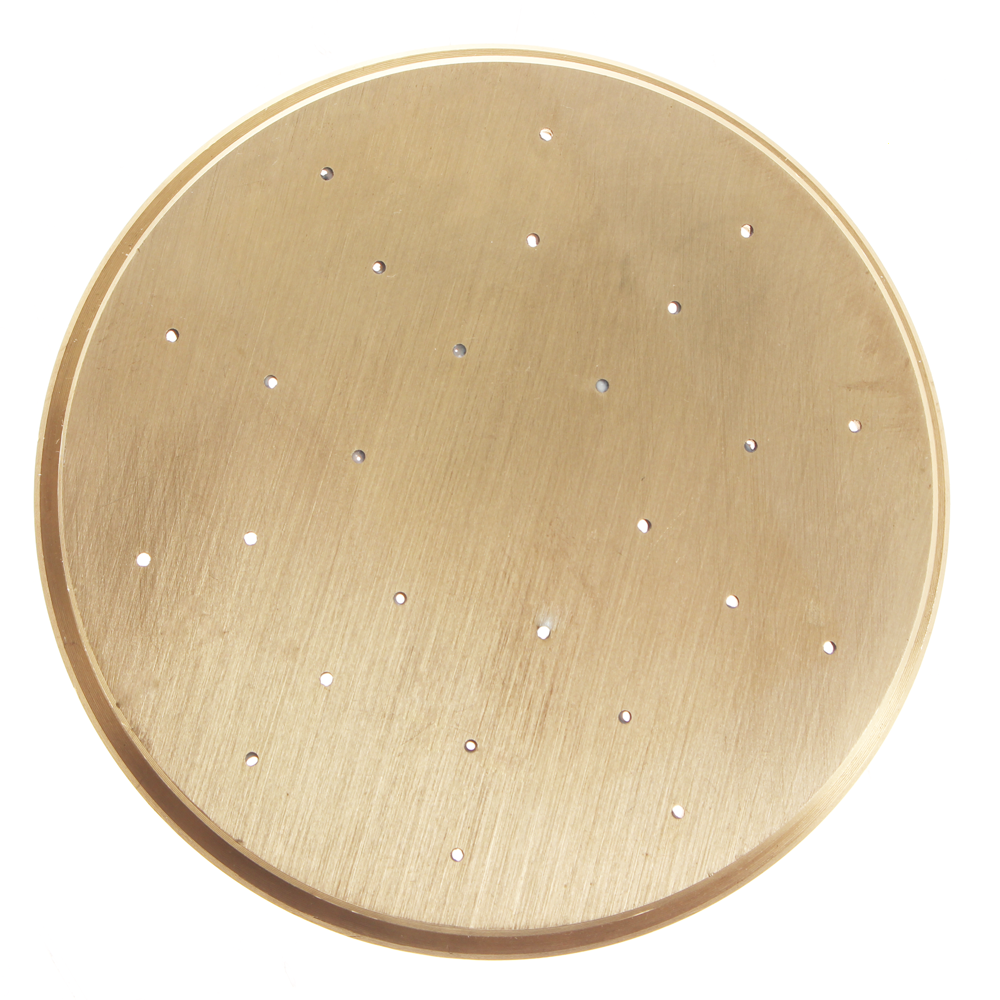
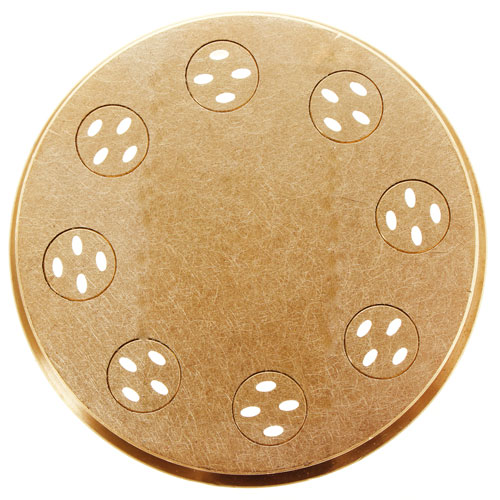

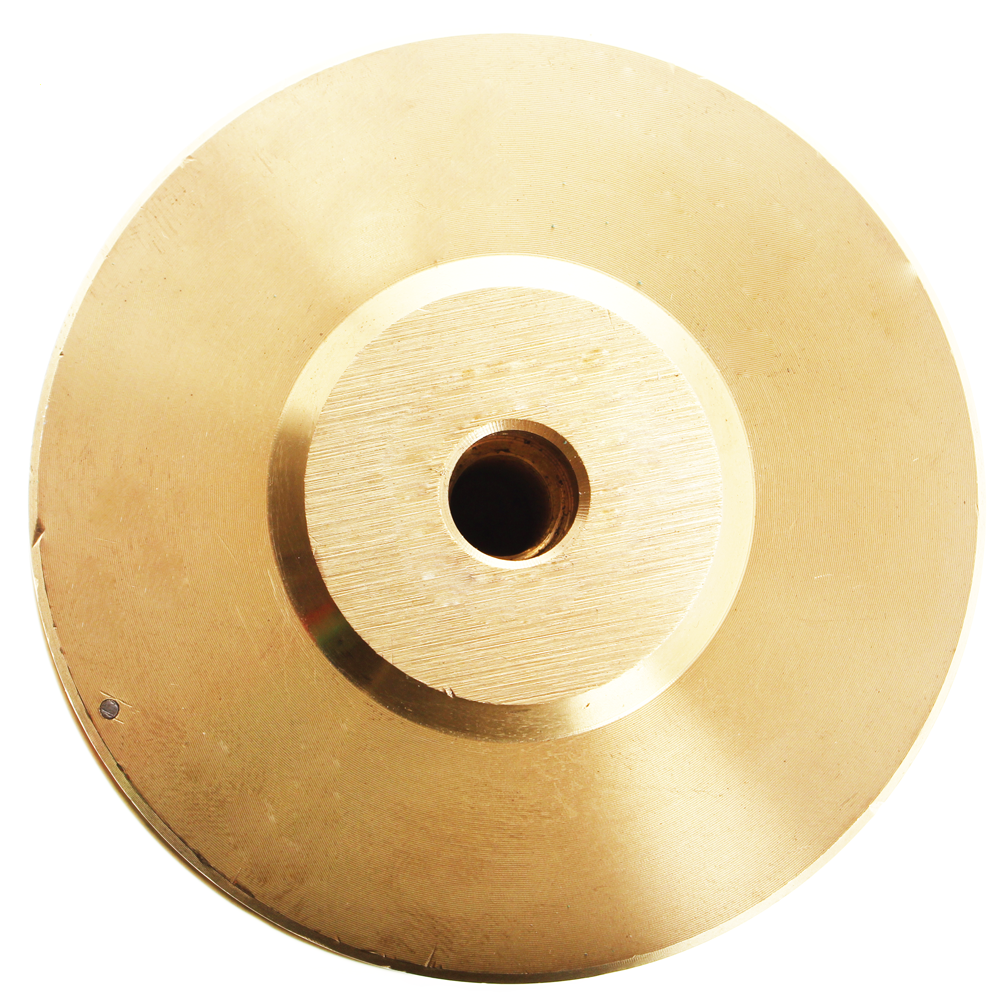

5. The parts of a pasta maker
Fresh pasta makers are very popular and well-known, but what are their main components?
To fully understand a pasta maker and all its functions, it is also important to know its components, which, although few in number, play precise roles.
Let us take a closer look at the parts that make up a pasta maker, whether manual or electric:
- The first picture shows a manual pasta maker, featuring a simple and very basic structure.
- The second shows an electric pasta maker, with a slightly more articulated structure and with the electric motor placed to the side.
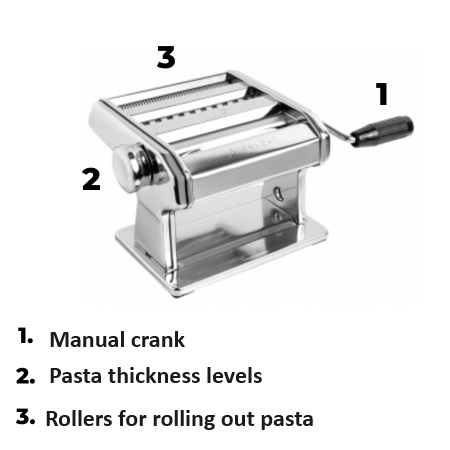
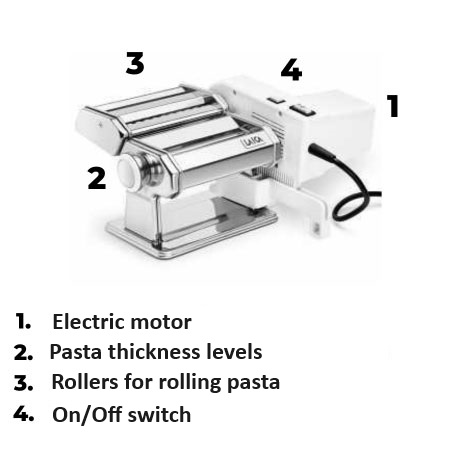
- The most prominent part of the machine is the central body, which can be made of various materials such as, stainless steel, ABS, steel and aluminium. Both models are usually square in shape, to facilitate the transition from one side of the sheet to the other;
- A further component found in both versions is the wheel for adjusting the thickness of the dough. Placed on one side of the machine, it allows the user to choose the desired level of thickness;
- Next are the rollers, which can have the function of both rolling the dough and drawing it into different shapes,
- The On/Off switch, located beside the electric motor, allows the machine to be switched on and off.
In the higher range versions, there is also a pulse function.
6. Materials
Materials may also vary, depending on the machine’s range, its use, and the total price of the machine.
What are the materials that make up the main parts of a pasta maker?
- The central body is in fact, in most cases, made of stainless steel as it is the material that ensures greater hygiene and is easier to clean once the tasks have been completed;
- One step below stainless steel pasta makers, we find models made of chrome-plated steel.
This material also ensures an excellent level of hygiene, but is slightly less resistant than stainless steel; - Stepping down in terms of use level, we find ABS plastic, a hard plastic that usually features in mid-range models;
- Finally, in rare cases, you can find models with an aluminium body; these are the cheapest models and consequently allow for limited and purely domestic work.
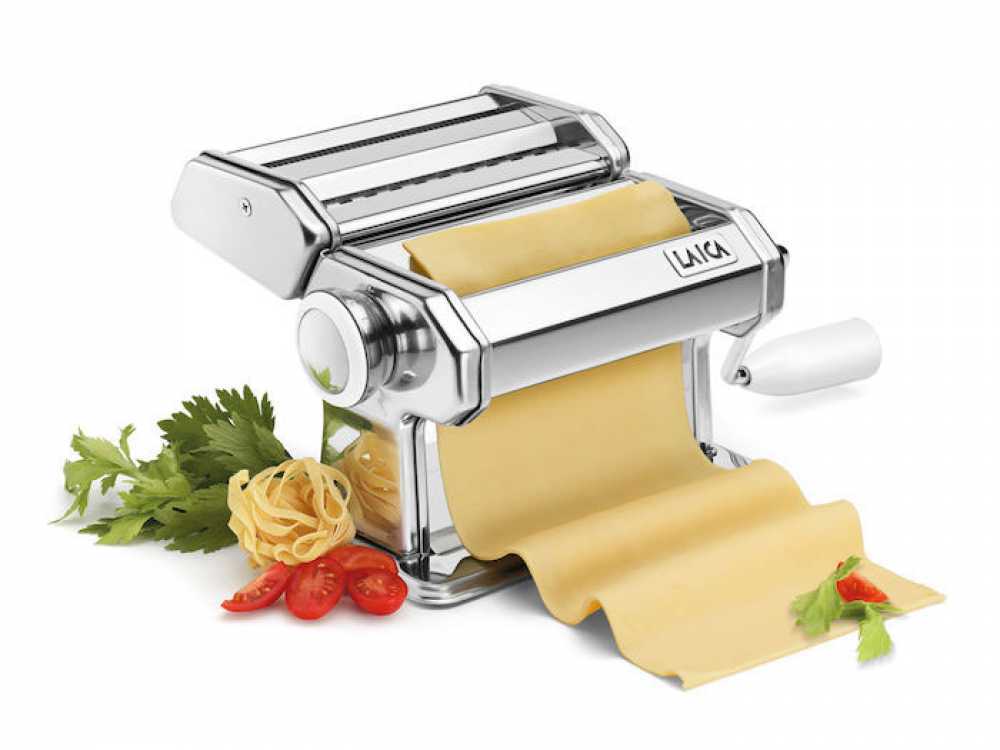
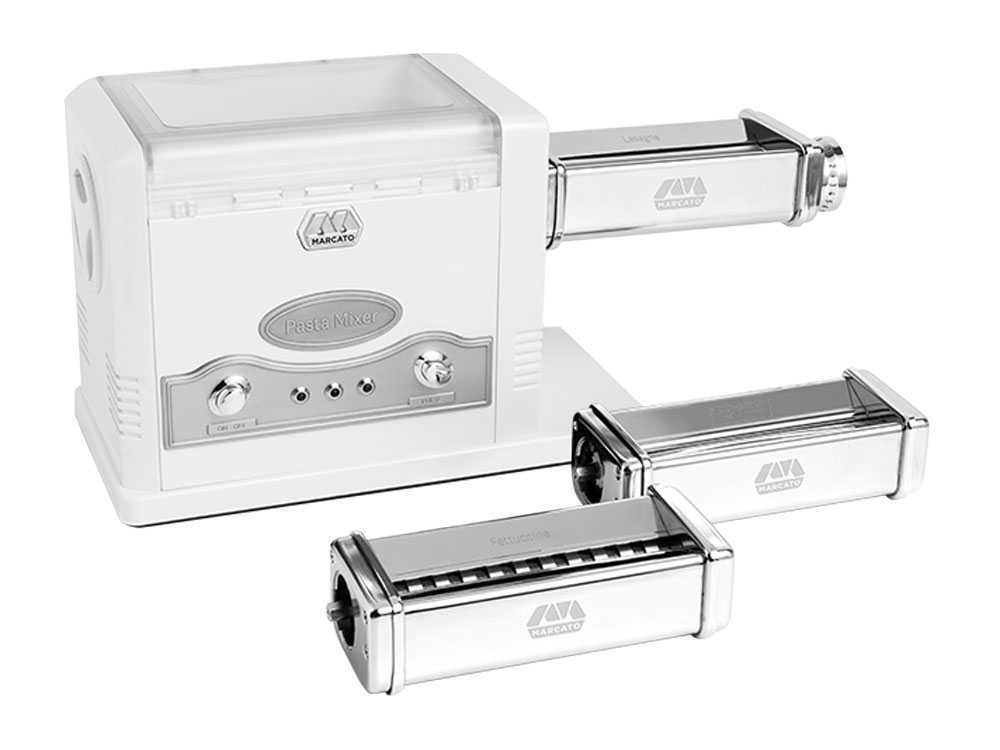
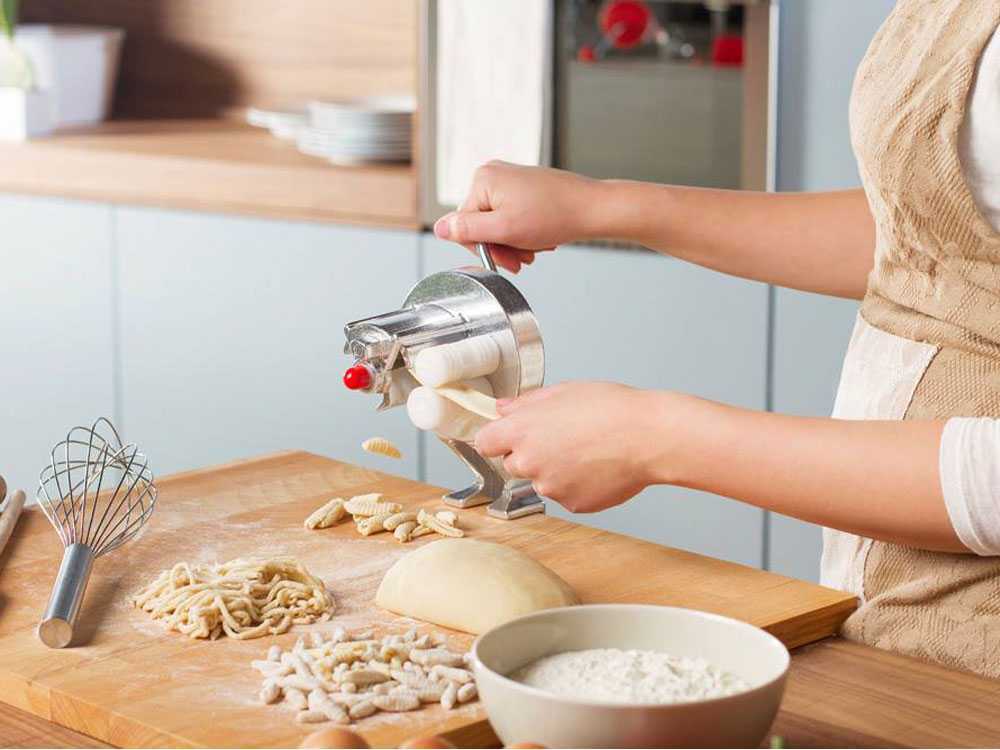
| Cleanliness Level | Price | Level of Use | |
| Stainless Steel | High | Medium-High | Professional |
| Chrome-plated Steel | High | Medium | Semi-professional/Professional |
| ABS Plastic | Medium | Medium | Hobbyist |
| Aluminium | Medium | Low | Limited |
7. How to clean the pasta maker?
Correctly and regularly cleaning pasta makers is a very important maintenance operation, first of all as a matter of hygiene, since they are used to process food, and secondly to keep the various parts of the machine in good condition.
How to clean pasta dies?
- To clean the dies, simply soak them in a container with lukewarm water and lemon to soften the dough residues and facilitate their removal.
How to clean the rollers of the sheeter?
- To clean the inner rollers, remove all the adjacent components and a wipe with a damp cloth to remove any residue.
8. Frequently asked questions from our customers
The price for a fresh pasta maker starts from €25 for manual pasta makers for domestic use, up to €4,000 for industrial machines with a double kneading/extrusion function.
The most well established and widespread brands in the sector are: Imperia, Reber, Fimar, Fama Industrie and New O.M.R.A.
Place the fresh pasta on trays with parchment paper and put it in the oven preheated to 50°.
Fresh pasta can be stored in the fridge for 2-3 days.
Fresh pasta can be stored in the freezer for 2-3 months.
The machine for making homemade pasta is called a manual pasta sheeter or pasta puller.
The price of an Imperia pasta maker starts from €45 for hobbyist models, to over €3000 for industrial models.



